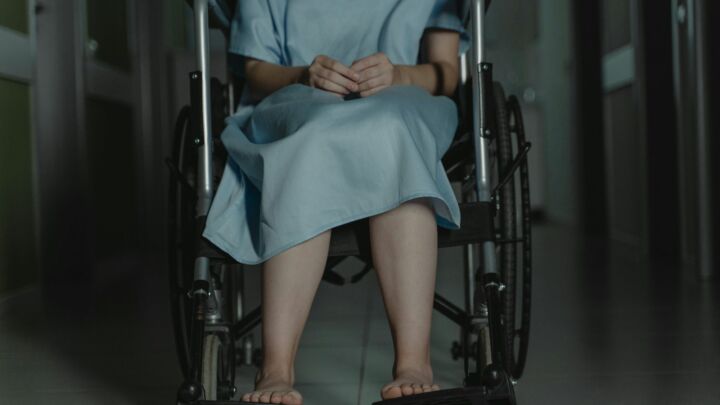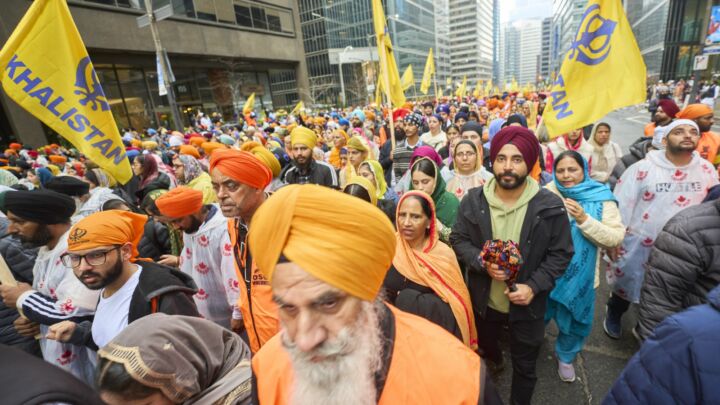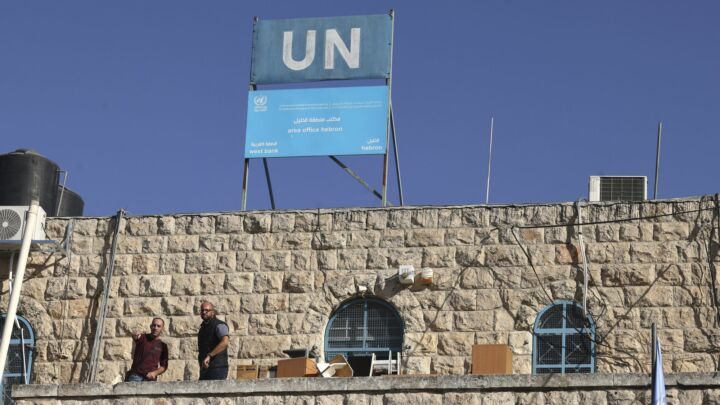A shot that rang round the world
How the Easter Rising inspired radicals from India to America.

Want to read spiked ad-free? Become a spiked supporter.
The international impact of the Easter Rising has rarely been acknowledged. This rebellion did not only rattle British rule in Ireland — it inspired radical movements in Britain itself and across the globe, and it shook colonial rulers and states worldwide.
The Great War that began in 1914 threw all progress into reverse, not just in its sacrifice of millions of men and women, but also in the succour it gave to reactionary politics. Britain as well as Ireland was under military rule and ‘national government’, with forced labour under the Munitions Act, and the end of the freedom to speak or organise under the Defence of the Realm Act. Militarist propaganda poisoned the country, encouraging reactionaries to attack anyone who questioned the war effort.
Then came the Easter Rising in Dublin, a small but significant blow against British rule and for Irish self-determination. Trinidadian revolutionary CLR James wrote that it was ‘the first blow struck against imperialism during the war at a time when the revolutionary movement in Europe seemed sunk in apathy’. Eighteen-year-old Patricia Lynch, who campaigned against the Great War with both the North London Herald Club and the East London Socialist Federation, bought a ticket and went to Dublin, and wrote vivid reports of the repression for the Workers’ Dreadnought. Sylvia Pankhurst’s editorial ran alongside Lynch’s articles, saying: ‘Justice can make but one reply to the Irish rebellion, and that is to demand that Ireland should be allowed to govern herself.’ Pankhurst warned that ‘the “firm and vigorous” administration which The Times demands for Ireland’ would be ‘but another term for coercion’.
Pankhurst also noted the ‘amazing doings’ in Dublin, and how ‘the little Republic of a week’ was promising ‘equal rights and opportunities’ for all citizens: ‘Amid the destruction and the carnage shone the fire of idealism and bravery.’ She continued: ‘I knew that the Easter Monday rebellion was the first blow in an intensified struggle, which would end in Irish self-government. I knew that the execution of the rebels had irrevocably ensured the ultimate success of their uprising.’
The Daily Herald, a popular left-wing paper, carried an appreciation of Rising leader James Connolly, written by Desmond Ryan: ‘Loathing the present war, and consistently with the teachings of a lifetime which identified political independence with social freedom, [Connolly] rose and fought and died.’ In Glasgow, the Socialist leader John Maclean visited scores of towns in Scotland on a speaking tour, asking workers to ‘strike… for the withdrawal of British troops from Ireland’. ‘Britain’s retention of Ireland is the world’s most startling instance of a “dictatorship by terrorists”’, said Maclean, in a pamphlet titled The Irish Tragedy, which sold 20,000 copies. ‘Britain rules Ireland against Irish wishes with policemen armed with bombs and a huge army’, he said.
Grateful for the solidarity action that British workers had taken to block the export of war material to be used against the Soviet Union, Austrian Marxist Karl Radek counselled that it would be harder, but better, if British comrades ‘[took] up the cause of Irish independence’. ‘It is their duty to use all their resources to block the policy that the British transport and railway unions are at present pursuing of permitting troop transports to be shipped to Ireland’, he said. The Russian Revolution had inspired the founding of a new radical party in Britain, and among its first commitments was this: ‘The news that comes daily from Ireland is in itself a summons to the Communist Party of Great Britain’, and ‘not only the Irish but the working class all the world over is looking to us’. So it was that the ‘Hands off Russia’ movement was supplemented by a ‘Hands off Ireland’ movement on the docks and railways in the summer of 1920.
While the anti-war socialists took up the cause of Ireland, the pro-war Labour Party leaders were violently against it. Jimmy Thomas, leader of the National Union of Railways, had fought against legendary Irish trade unionist Jim Larkin’s influence on Irishmen in his union in 1913 — so it wasn’t surprising that in 1920 he stamped down hard on all ‘Hands off Ireland’ solidarity actions by his union members. Even the Glasgow paper Forward objected in relation to 1916 that ‘a man must either be a nationalist or an internationalist’. However, Arthur MacManus’s Communist Party countered that in ‘the case of a small nation held in forcible suppression by a great imperialist state, the national struggle and the class struggle are inseparable from one another’.
The integrity of the British Army was undermined by the events of 1916 and afterwards. In Cork in 1915, Tom Barry, aged 17, had joined the British Army. He was looking at a noticeboard where the war news was put up, and there he read the following: ‘REBELLION IN DUBLIN.’ ‘It told of the [British] shelling of the Dublin GPO [General Post Office] and Liberty Hall and of hundreds of rebels killed, thousands arrested and leaders being executed’, he later wrote in Guerrilla Days in Ireland. ‘It was a rude awakening, guns being fired at the people of my own race by soldiers of the same army that I was serving.’
Barry returned to Ireland at the end of the Great War, and promptly put his warrior’s training to work fighting against the British Army. As commander of the West Cork Flying Column of the Irish Republican Army, Barry harassed and pinned down British forces of 12,500 men.
In 1922, Sir Henry Wilson, former chief of the General Imperial Staff, was ambushed by two IRA men, Reginald Dunne and Joseph O’Sullivan. Both had served in Wilson’s army: Dunne as a private on the Western Front with the Irish Guards; O’Sullivan as a lance corporal.
At trial, Dunne said: ‘We both joined [the British Army] voluntarily for the purpose of taking human life, in order that the principles for which this country stood should be upheld and preserved. Those principles, we were told, were self-determination and freedom for small nations. We came back from France to find that self-determination had been given to some nations we had never heard of, but that it had been denied Ireland.’
In 1920, a company of the Connaught Rangers was stationed at the Wellington Barracks in Jullundur, India. They could not be stationed in Ireland, because those regiments that were largely Irish were not trusted there. On 28 June, they refused to work, as a protest against the British Army’s action in Ireland, ‘where they consider their friends are being oppressed’, as one report put it. On hearing about the protest at Jullundur, another company of Connaught Rangers at Solon also rebelled. Sixty-nine men were tried for mutiny; 14 were sentenced to death by firing squad, though all but one of the sentences were commuted to life imprisonment.
A British official telegrammed the Viceroy of India on 9 July 1920: ‘We have every reason to believe that the whole affair was engineered by Sinn Fein. Large Sinn Fein flags were hoisted in the barracks when the mutiny broke out at Jullundur… Sinn Fein colours and rosettes were also worn.’
The soldiers explained themselves, saying: ‘If you were to be shot, stick up for your Irish home which is ruined by the troops in our dear country.’ ‘It is our duty to fight now and make her free once more’, they wrote on a placard. When the men began their mutiny, they renamed their barracks Liberty Hall after the headquarters of the Irish Citizen’s Army.
The victory of Ireland’s strike for liberation (however incomplete) was a blow against British prestige that was watched carefully throughout the Empire, and by colonised peoples across the world.
India’s emerging national movement, in particular, was electrified by the Irish republicans’ successes. ‘Bravo!’, the Indian paper Ghadr saluted the Easter Rising. ‘O Irish, you kept your sword on high and did not show the white feather’, it said. In 1920, the Friends of Freedom in India joined the St Patrick’s Day Parade in New York, wearing turbans of gold and green and led by Sailendra nath Ghose on a horse. They published a leaflet that said: ‘Help India to liberty and independence. The British Empire can alone be destroyed by separating India from it. Only INDEPENDENT INDIA can save America, Ireland, Egypt and the whole world from the BRITISH PERIL.’ The Friends of Freedom for India called the Easter Rising ‘Ireland’s Amritsar’ — in reference to a rebellion and massacre in India — and predicted of the perpetrator of the Amritsar horrors: ‘We may expect soon to hear of General Dyer’s being assigned to duty in Ireland.’
The emerging challenge to British rule in Bengal took heart from the Irish example, too, so that the Bengali-English writer Nirad Chaudhuri teased the revolutionaries that they ‘thought they were the Sinn Fein of India’. Calcutta police commissioner JH Colson sent an urgent report about a pamphlet put out by the United Socialist Republican Party ‘with portraits side-by-side of Subhas Chandra Bose… and the late Michael Collins, the head of the IRA’.
Dan Breen’s memoir My Fight for Irish Freedom was published in no less than four different languages in the British Empire in the East: Hindi, Punjabi, Tamil and Burmese. Each one was banned by the colonial authorities.
In 1930, a battalion of Bengali nationalists attempted a revolution, storming government offices in Chittagong, but they were overpowered. At their trial, the Chittagong district magistrate HR Wilkinson said Breen’s book ‘might aptly be described as the Revolutionaries’ Manual’. The group was ‘thoroughly conversant with it’, he said. ‘Dan Breen’s book is held up as a text book for the revolutionaries of India’, Wilkinson continued. ‘The action of the revolutionaries was largely inspired by this book and… their plan of operations was based upon its lessons.’
In Burma in 1937, Ba Maw and Aung San – who would govern Burma after the Second World War – set up the National Revolutionary Party on the model of the Irish Republican Party to take advantage of Britain’s difficulties with the Japanese in the Far East. The Burmese nationalists had a ready stock of Sinn Fein propaganda – including the Burmese translation of Breen’s book – available from a radical bookshop in Rangoon run by JS Furnivall.
The young Ho Chi Minh, before he was president of Vietnam, travelled around Europe and America between 1912 and 1919, stopping in London and Paris, working as a cook and a dishwasher in London. ‘He saw how England, the largest colonial Empire in the world, harshly suppressed Ireland’s quest for independence’, reports his biographer Pierre Brocheux. He was particularly impressed that the Irish took up arms in 1916, ‘right in the middle’ of the First World War. He wrote in his diary that he cried when he heard of the death of Terence MacSwiney, a fighter in the 1920 Irish War of Independence who died on hunger strike in Brixton Prison, saying ‘a nation which has such citizens will never surrender’.
Black Americans were inspired by the Easter Rising, too. The leader of the United Negro Improvement Association, Marcus Garvey, called the association’s building in Harlem Liberty Hall. When MacSwiney died, Irish-American dock-workers struck out the ports in August and September 1920. Garvey’s supporters went to speak to the strikers, to make sure that black dock-workers joined the action. Another group, the African Blood Brotherhood, based in New York, hoped to build ‘a great Pan-African army in the same way as Sinn Fein built up the Irish army under the very nose of England’. Around the world, from Asia to America, the actions of the rebels of 1916 and its aftermath caused ruling elites to be called into question, and radicalism to gain new energy.
James Heartfield and Kevin Rooney are the authors of Who’s Afraid of the Easter Rising? 1916-2016, published by Zero Books. (Order this book from Amazon(UK))
Picture by: Getty / Topical Press Agency / Stringer
Celebrate 25 years of spiked!
A media ecosystem dominated by a handful of billionaire owners, bad actors spreading disinformation online and the rich and powerful trying to stop us publishing stories. But we have you on our side. help to fund our journalism and those who choose All-access digital enjoy exclusive extras:
- Unlimited articles in our app and ad-free reading on all devices
- Exclusive newsletter and far fewer asks for support
- Full access to the Guardian Feast app
If you can, please support us on a monthly basis and make a big impact in support of open, independent journalism. Thank you.






Comments
Want to join the conversation?
Only spiked supporters and patrons, who donate regularly to us, can comment on our articles.